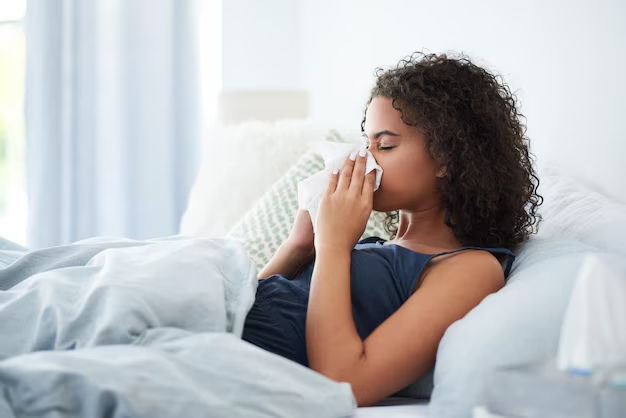Unraveling Walking Pneumonia: What You Need to Know
When you hear pneumonia, severe symptoms and potential hospitalization might come to mind. However, what if you learned there’s a form of pneumonia that allows sufferers to go about their daily lives seemingly unaffected? Enter walking pneumonia, a milder cousin in the pneumonia family that often sneaks by undetected. Understanding its roots helps us demystify what causes this intriguing condition and how it differs from its more severe counterpart.
What Exactly is Walking Pneumonia?
Walking pneumonia is a less severe form of pneumonia often caused by the bacterium Mycoplasma pneumoniae. Unlike typical pneumonia, which can lead to hospitalization, walking pneumonia usually presents milder symptoms. It's so subtle that people might not realize they have it and continue their daily routines, hence the term walking.
Mycoplasma Pneumoniae: The Hidden Culprit
The bacterium Mycoplasma pneumoniae is the most common cause of walking pneumonia. Unlike other bacteria, it lacks a cell wall, making it less visible to standard antibacterial treatments. This unique characteristic allows it to spread more easily and evade the body's immune defenses. While it chiefly affects young people, particularly school-aged children and young adults, anyone can contract it.
Key Characteristics of Mycoplasma pneumoniae:
- Absence of a cell wall.
- Slow growth in culture, taking up to three weeks to detect.
- It spreads through respiratory droplets, making it common in crowded environments like schools and dorms.
Symptoms of Walking Pneumonia: Mild but Persistent
Identifying walking pneumonia can be akin to solving a mystery due to its subtle symptoms:
- Persistent Dry Cough: It might last three to four weeks.
- Sore Throat: Typically mistaken for a common cold.
- Fatigue: Mild, yet noticeable.
- Low-Grade Fever: Seldom exceeding 101°F (38.3°C).
- Headache: A dull throb that often accompanies the fever.
- Chills: Mild and often unnoticed.
Since its symptoms overlap with those of a cold or flu, recognizing walking pneumonia can be difficult without medical testing.
How Walking Pneumonia Spreads
Being in close quarters with an infected person increases your risk, especially during colder months when people spend more time indoors. While it primarily spreads through respiratory droplets, understanding the transmission helps in prevention.
Environments Conducive to Spread
- Schools: High interaction level.
- Dormitories: Close living conditions.
- Workplaces: Shared spaces with insufficient ventilation.
Knowing these high-risk areas aids in implementing preventive measures like frequent hand washing and using tissues to cover coughs and sneezes.
Diagnosing Walking Pneumonia
Medical professionals rely on symptom review and physical exams to suspect walking pneumonia. Unlike more virulent pneumonia types, walking pneumonia seldom appears on chest X-rays, making it more elusive. When doctors suspect Mycoplasma pneumoniae, they might request specific blood tests or sputum cultures.
Important Note: While it's vital to recognize the potential signs of walking pneumonia, only healthcare providers can accurately diagnose it.
Treatment Approaches
Walking pneumonia often resolves on its own without significant medical intervention. However, if needed, simple treatments can address it:
- Antibiotics: In particular, those that target Mycoplasma pneumoniae given the bacterium's atypical profile.
- Rest and Hydration: Essential for recuperation.
- Over-the-Counter Medication: For symptom management, like fever reducers.
While these treatments help, it's important to avoid self-diagnosing and consult healthcare providers to ensure effective management.
Preventive Measures to Guard Against Walking Pneumonia
Preventing walking pneumonia hinges on maintaining hygiene and boosting immunity:
- Frequent Hand Washing: Simple yet effective in reducing respiratory infections.
- Healthy Diet: Nutrients bolster immune defense.
- Adequate Sleep: Vital for a robust immune system.
- Vaccination: While no specific vaccine exists for walking pneumonia, flu vaccines help reduce respiratory infection risks.
By incorporating these measures into daily routines, the risk of contracting walking pneumonia decreases significantly.
Understanding Related Conditions
Walking pneumonia is part of a broader category of atypical pneumonias that often masquerade as benign conditions.
Other Causes of Atypical Pneumonia
- Legionella pneumophila: Often contracted from water sources; associated with more severe symptoms.
- Chlamydophila pneumoniae: Similar in transmission to Mycoplasma pneumoniae but potentially more aggressive.
- Viruses: Influenza or the adenovirus group can also mimic walking pneumonia symptoms.
Understanding these helps in distinguishing between various respiratory infections and informing management strategies.
When to Seek Medical Attention
While generally mild, some signs may indicate complications or progression requiring a healthcare professional's attention:
- Difficulty Breathing: Breathing becomes labored or significantly faster.
- Persistent High Fever: Exceeds typical ranges and doesn't respond to over-the-counter meds.
- Worsening Symptoms: Despite taken measures.
Trusting your body is essential; if something feels off, consultation is valuable.
In unfolding the mystery of walking pneumonia, understanding its nuances empowers readers to take proactive steps towards maintaining health and mitigating risks. When armed with knowledge and awareness, we can better navigate the delicate balance of preventing, identifying, and addressing walking pneumonia.
Quick Takeaways on Walking Pneumonia 🚶♂️💨
- What is it?: A mild yet persistent respiratory infection.
- Key Culprit: Mycoplasma pneumoniae bacterium.
- Symptoms: Dry cough, sore throat, fatigue.
- Transmission: Through respiratory droplets in densely populated areas.
- Diagnosis: Relies on symptom review and specific tests.
- Treatment: Often self-resolving; antibiotics may help.
- Prevention: Hygiene, nutrition, vaccination, and rest.
- Seek Help If: Breathing difficulty or persistent high fever occurs.
This overview equips you with essential insights into walking pneumonia, presenting an informed perspective on a seemingly benign yet intriguing health condition.

Related Articles
- a Typical Pneumonia
- Can a Cold Turn Into Pneumonia
- Can a Sinus Infection Turn Into Pneumonia
- Can Amoxicillin Cure Pneumonia
- Can Amoxicillin Treat Pneumonia
- Can Baby Oil Cause Pneumonia
- Can Bronchitis Turn Into Pneumonia
- Can Covid Turn Into Pneumonia
- Can Doxycycline Treat Pneumonia
- Can Flu Turn Into Pneumonia